
Green Chemistry Letters and Reviews
Scope & Guideline
Empowering research that transforms the chemical landscape.
Introduction
Aims and Scopes
- Green Synthesis Methods:
Research on environmentally benign methods for synthesizing nanoparticles, polymers, and other chemical compounds, often utilizing biological materials or waste products as reducing agents. - Waste Valorization:
Studies aimed at converting agricultural, industrial, and electronic waste into valuable products, including biofuels, biopolymers, and nanomaterials, highlighting sustainable practices. - Environmental Remediation:
Investigation into methods for removing pollutants from water and soil, including biosorption and advanced oxidation processes, to address contamination from heavy metals and dyes. - Sustainable Materials Development:
Development of new materials, such as biodegradable polymers and eco-friendly flame retardants, that reduce environmental impact and promote sustainability. - Education in Green Chemistry:
Innovative approaches to teaching green chemistry principles at various educational levels, aiming to integrate sustainability into the chemistry curriculum. - Applications of Green Chemistry:
Exploration of practical applications of green chemistry in diverse fields such as pharmaceuticals, agriculture, and energy, emphasizing the use of green solvents and catalysts.
Trending and Emerging
- Nanomaterial Synthesis and Applications:
A significant increase in research related to the green synthesis of nanomaterials, particularly using plant extracts, is evident. These materials are being explored for various applications, including catalysis, drug delivery, and environmental remediation. - Biobased and Biodegradable Polymers:
There is a growing trend towards developing biobased and biodegradable materials as alternatives to conventional plastics, reflecting an urgent need for sustainability in materials science. - Microbial and Plant-Mediated Synthesis:
Emerging research is highlighting the use of microorganisms and plant extracts for synthesizing nanoparticles and other compounds, showcasing the potential of biological methods in green chemistry. - Integrated Approaches to Waste Management:
Research is increasingly focusing on integrated waste management strategies that combine recycling, valorization, and sustainable practices to minimize environmental impact. - Environmental Impact Assessments:
A trend towards conducting life cycle assessments and environmental impact studies for new chemical processes and products is evident, ensuring that sustainability is at the forefront of chemical innovation. - Education and Outreach in Green Chemistry:
An emerging focus on incorporating green chemistry principles into educational curricula is gaining momentum, aiming to equip future chemists with the skills needed for sustainable practices.
Declining or Waning
- Traditional Organic Synthesis:
There is a noticeable decline in studies focusing solely on traditional organic synthesis methods, as the emphasis shifts towards greener, more sustainable alternatives. - Conventional Solvent Use:
Research involving conventional solvents is becoming less frequent, with a growing preference for solvent-free reactions or the use of green solvents. - Heavy Metal Catalysis:
The exploration of heavy metal catalysts in green chemistry is decreasing as researchers seek to minimize toxicity and environmental impact, favoring biocatalysts and transition metal-free approaches. - Single-Use Plastics:
Discussions around single-use plastics are diminishing, likely due to a broader awareness and focus on biodegradable materials and sustainable alternatives. - Basic Laboratory Techniques:
There is a waning interest in basic laboratory techniques that do not incorporate green principles, as the field increasingly prioritizes innovative and environmentally friendly methodologies.
Similar Journals
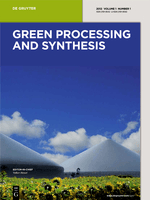
Green Processing and Synthesis
Championing Research for a Greener PlanetGreen Processing and Synthesis, published by DE GRUYTER POLAND SP Z O O, stands as a vital open-access journal in the realms of Chemical Engineering, Environmental Chemistry, Fuel Technology, and more since its inception in 2012. With an impressive impact factor and currently ranked in the Q2 category across multiple domains, this journal plays a key role in disseminating cutting-edge research that addresses global sustainability challenges. The journal emphasizes innovative methodologies and sustainable practices that are crucial for advancing green technologies. Researchers, professionals, and students alike are encouraged to explore its extensive archive and contribute to the evolving conversation around environmentally conscious processing and synthesis techniques, all accessible freely since 2019.
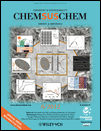
ChemSusChem
Innovating Tomorrow's Sustainable Chemical ProcessesChemSusChem is a premier interdisciplinary journal, published by WILEY-V C H VERLAG GMBH, that focuses on the critical fields of Chemical Engineering, Energy, Environmental Chemistry, and Materials Science. Since its inception in 2008, the journal has consistently maintained a Q1 ranking across multiple categories, highlighting its role as a vital resource for researchers and professionals dedicated to advancing sustainable chemical processes and technologies. With an impressive impact factor, it ranks 12th in General Chemical Engineering and is highly regarded within its scopes, indicating the journal's commitment to publishing high-quality, innovative research that addresses global challenges in energy and environmental sustainability. Though it operates on a subscription model, its contributions are essential for those in academia and industry seeking cutting-edge developments in sustainable chemistry. As it approaches its convergence span through 2024, ChemSusChem continues to shape the future of sustainable chemistry, making it a must-read for students, researchers, and practitioners alike.

INDIAN JOURNAL OF CHEMICAL TECHNOLOGY
Exploring New Frontiers in Chemical SciencesThe Indian Journal of Chemical Technology, published by the Natl Inst Science Communication-NISCAIR, is a pivotal platform for the dissemination of innovative research in the field of chemical technology. With an ISSN of 0971-457X and an E-ISSN of 0975-0991, this journal has been serving the academic community since its inception in 1994, and is set to continue through 2024. The journal holds a Q4 ranking in both the Chemical Engineering and Chemistry categories as of 2023, though it showcases a significant breadth of research, making it a valuable resource for both emerging and established scholars. Although it currently operates without an open-access model, the journal aims to facilitate knowledge exchange through rigorous peer-reviewed publications, allowing researchers and professionals to stay updated with the latest advancements and practices in chemical technology. Located in New Delhi, India, the journal not only contributes to national scientific dialogue but also plays a key role in the global conversation around chemical sciences by addressing unique challenges and innovations pertinent to the region.

Journal of the Iranian Chemical Society
Pioneering Discoveries in the Heart of ChemistryThe Journal of the Iranian Chemical Society, published by SPRINGER, is a prominent academic journal dedicated to advancing the field of chemistry. With an ISSN of 1735-207X and an E-ISSN of 1735-2428, this quarterly journal has been contributing valuable research from 2006 to 2024. Situated in Germany, it serves as a vital platform for chemists and researchers to disseminate their findings, particularly within the miscellaneous chemistry category, where it ranks in the Q3 quartile for 2023. Despite its current lack of open access options, the journal maintains a solid presence in the academic community, evidenced by its Scopus ranking of #165 out of 408 in general chemistry and a commendable 59th percentile. The journal's objective aims to foster innovation and collaboration in chemical research, making it an essential resource for professionals and students keen on pioneering developments in the field. As a subscriber, you will gain insights into cutting-edge research that drives the future of chemistry.
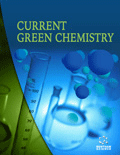
Current Green Chemistry
Transforming chemical research for a sustainable tomorrow.Current Green Chemistry, published by Bentham Science Publishers, is a pivotal scholarly resource devoted to advancing the field of green chemistry. With ISSN 2213-3461 and E-ISSN 2213-347X, this journal serves as a crucial platform for researchers and professionals to explore innovative and sustainable practices within the chemical sciences. The journal has demonstrated significant recognition, evidenced by its categorization in the third quartile (Q3) across various specializations including Analytical Chemistry and Inorganic Chemistry, and even a fourth quartile (Q4) in Organic Chemistry, according to the latest Scopus metrics. This indicates a growing influence in relevant fields, making it a valuable reference for contemporary environmental initiatives. The journal's accessible nature, although not open access, ensures researchers can still engage with high-quality, peer-reviewed content. Spanning an impressive converged period from 2019 to 2024, Current Green Chemistry is committed to enhancing the visibility of groundbreaking research that aligns with sustainable development objectives, making it an essential resource for anyone interested in the future of chemistry.
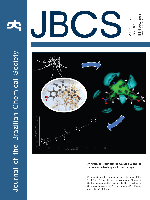
JOURNAL OF THE BRAZILIAN CHEMICAL SOCIETY
Showcasing Excellence: Your Source for Diverse Chemical InsightsThe Journal of the Brazilian Chemical Society (ISSN: 0103-5053; E-ISSN: 1678-4790), published by the Sociedade Brasileira de Química, stands as a prominent outlet for disseminating high-quality research in the field of chemistry. Since its establishment as an Open Access journal in 1990, it has been committed to providing unrestricted access to innovative findings and discussions that propel the advancement of chemical sciences globally. Located in the vibrant research landscape of Brazil, this journal aims to showcase a wide range of topics including analytical, organic, inorganic, and physical chemistry, among others, catering to a diverse audience of researchers, professionals, and students alike. The journal holds a noteworthy distinction with a Q3 quartile ranking in the field of miscellaneous chemistry for 2023 and is indexed in Scopus, reflecting its growing influence in the academic community. With a publication cycle that spans continuously from 1990 through 2024, it serves as a vital resource for anyone seeking to stay informed about the latest trends and breakthroughs in chemistry.
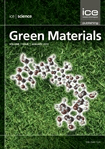
Green Materials
Transforming challenges into sustainable material solutions.Green Materials, published by Emerald Group Publishing Ltd, serves as a crucial platform for research within the realm of sustainable materials science. Since its inception in 2013, this journal has focused on addressing pressing global challenges, particularly in Materials Chemistry, Pollution, and Polymers and Plastics, as evidenced by its rankings within the Q3 Quartiles. With a commitment to high-quality, peer-reviewed content, it caters to an audience keen on innovative solutions that promote environmental sustainability. Researchers and professionals can access a wealth of knowledge and insights that are instrumental in advancing the field, despite the absence of an open-access option. As the journal continues to converge towards its projected endpoint in 2024, it remains a vital resource for those dedicated to exploring the intersection of materials science and ecological responsibility, ensuring its relevance in academic discussions and practical applications.

Revista Virtual de Quimica
Elevating Chemistry Research with Global AccessibilityRevista Virtual de Quimica, published by the SOC BRASILEIRA QUIMICA, is a dynamic online journal based in Brazil, dedicated to promoting innovative research in the field of chemistry and related disciplines. Established in 2011, the journal has made significant strides in contributing to the academic landscape, receiving an impact factor that highlights its relevance, although it currently holds a Q4 quartile ranking in the miscellaneous category of Chemistry and Mathematics as of 2023. The journal is committed to open access, ensuring that scholarly articles are readily available to researchers, professionals, and students worldwide. Its focus encompasses diverse areas within general chemistry, aiming to foster knowledge sharing and collaboration among the scientific community. By providing a platform for high-quality research publications, Revista Virtual de Quimica stands as an essential resource for advancing chemical sciences and encouraging interdisciplinary studies.

ACS Sustainable Chemistry & Engineering
Driving innovation for a sustainable world.ACS Sustainable Chemistry & Engineering is a premier journal published by the American Chemical Society, dedicated to advancing knowledge and innovation in the fields of sustainable chemistry and engineering. With an impressive impact factor and a consistent ranking in the Q1 category across various disciplines such as Chemical Engineering, Chemistry, Environmental Chemistry, and Renewable Energy, this journal serves as a vital resource for researchers, professionals, and students alike. Since its inception in 2013, the journal has been committed to publishing high-quality, peer-reviewed articles that address the critical challenges of sustainability in chemistry and engineering. With no open-access option currently available, the journal emphasizes the importance of premium scholarly communication. As the field continues to evolve, ACS Sustainable Chemistry & Engineering remains at the forefront of providing cutting-edge research that impacts our understanding and application of sustainable practices in the chemical sciences.

RUSSIAN CHEMICAL REVIEWS
Unveiling Innovations in Chemistry, One Review at a TimeRUSSIAN CHEMICAL REVIEWS, published by the esteemed ND Zelinsky Institute of Organic Chemistry, RAS, stands as a prominent platform for disseminating high-quality research in the diverse field of chemistry. With an ISSN of 0036-021X and an E-ISSN of 1468-4837, this journal has earned its place in the Q1 quartile of Chemistry (miscellaneous) for 2023, reflecting its outstanding impact and rigorous peer-review process. The journal encompasses a wide array of topics within chemistry, providing critical reviews that advance understanding and foster collaboration among researchers, professionals, and students globally. With its consistent publication since 1970, RUSSIAN CHEMICAL REVIEWS not only serves as a valuable resource for the latest advancements in the field but also plays a crucial role in shaping future research directions. The journal is based in the Russian Federation, with its office located at 47 Leninsky Pr, Moscow 119991, RUSSIA. As an essential reference for those in the chemical sciences, it provides an ideal avenue for authors looking to publish impactful reviews that contribute to the broader scientific community.